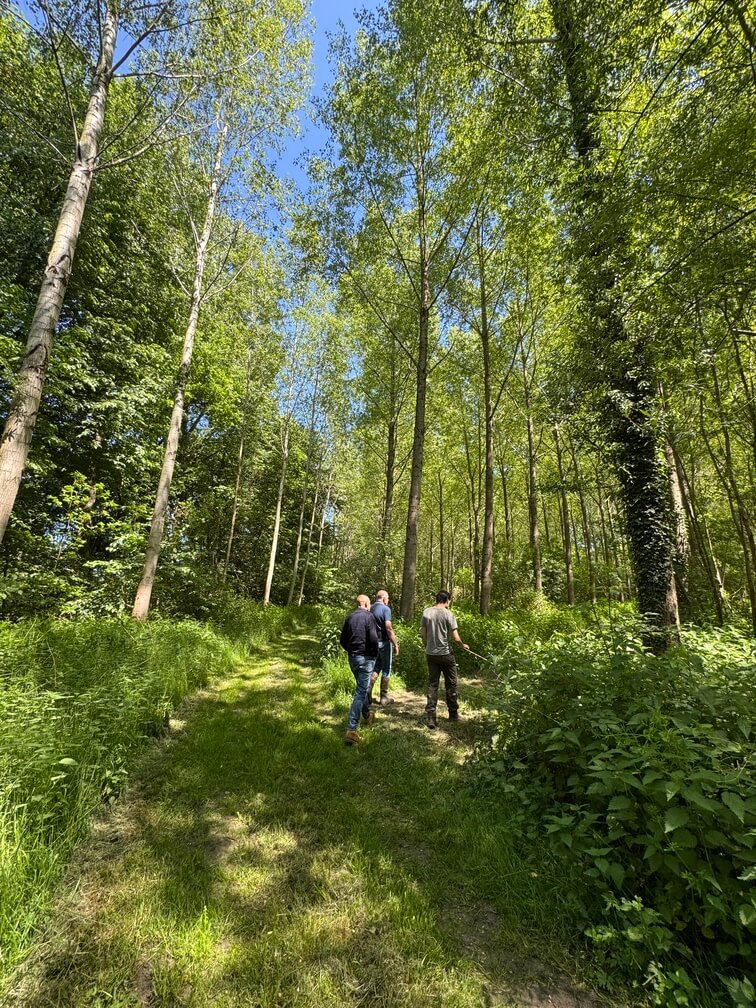Thousands of hectares of forests are threatened by climate change, pests, and diseases in Belgium and other European countries. That’s why we – together with our technical partner Sylva Nova – are committed to different projects for creating and maintaining healthy, diverse, and climate-resilient forests. We do this by only selecting forestry projects with added value for the environment and we help the landowners who are experiencing difficulties in their forestry process (climate change, bark beetles, ash branch mortality…). Through incentive measures, we guide him towards more sustainable management with solutions to make the forest more sustainable.
Our projects cover a wide spectrum of forestry:
- Increase in forest cover by converting abandoned agricultural land into forest
- Afforestation of areas threatened by drought and desertification
- Reforestation of areas severely burned or destroyed by natural disasters
- Reforestation of forest areas affected by pests
- Restoration of native forests
- Restoration of natural forests after industrial activities
- Heritage conservation by restoring forested landscapes
- Structuring, enrichment, and diversification of forests to ensure their long-term survival
- Conservation and improvement of important forest areas
- Conservation of endangered species
We manage the plantations locally, with respect for native species and local customs, and with a view on optimal biodiversity. They are monitored for 5 years, with annual follow-up.
In short, we divide the projects into the following four categories:
Reforestation
We reforest areas or patches of forest that have suffered from diseases or plagues. Reforestation involves planting trees in a systematic, planned manner. Careful selection of tree species, proper spacing, and ongoing maintenance activities, such as watering, weeding, and protection from pests, are essential for the success of reforestation projects.
Creating the ideal reforestation project for a specific location involves considering soil conditions, whether it’s wet or dry, and the slope of the terrain. The framework for this project should include a minimum of three species, with a maximum of 70% dominance by any one species. Over the course of five years, the goal is to witness an increase in the variety of species, ultimately resembling a natural forest.
Forest management – which must be executed for 30 years – plays a crucial role in achieving these objectives. A managed approach, involving increased light exposure, aims to foster at least 20 different species. On the other hand, an unmanaged approach results in reduced light availability and fewer species. In the long term, it’s good to note that clear-cutting diversified forests is very expensive and illogical.
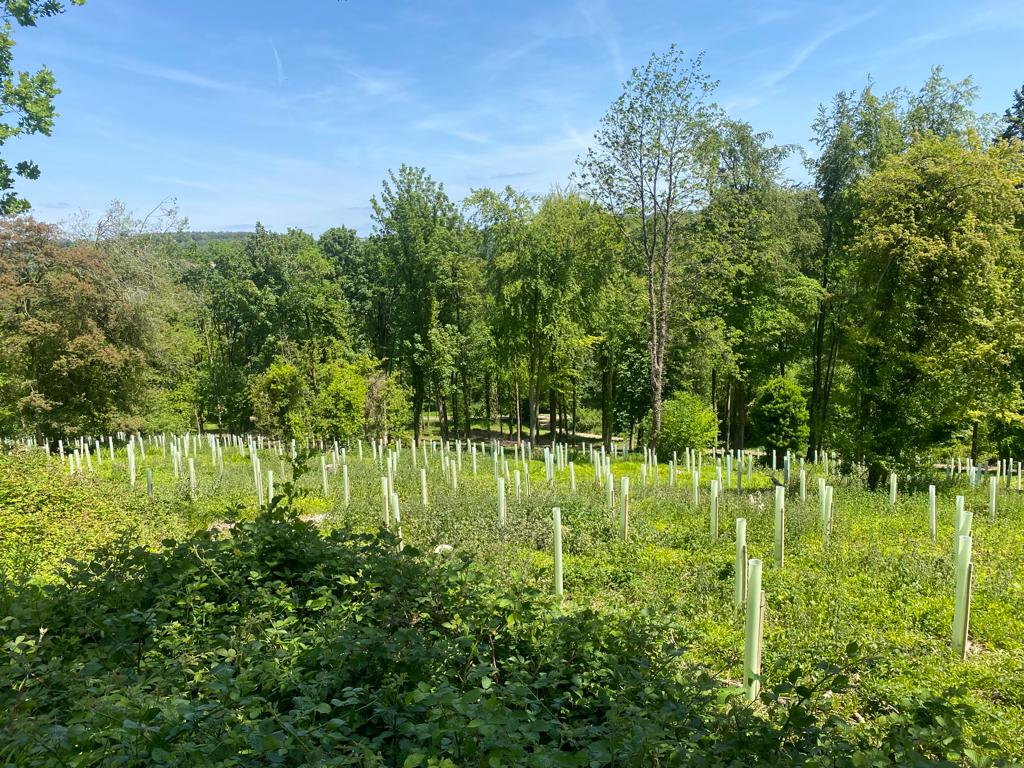
Go Forest example project: Cunewalde, Germany, in cooperation with A.S. Adventure and Tourism Germany: https://impact.gofamily.be/en/projects/reforestation-in-germany
Hedge projects
Planting or reinforcing diversified hedges and trees in mainly agricultural regions helps provide food and habitats for a multitude of insects, birds, bats, and small mammals. In general, this project benefits all of the ecosystem benefits, as described below.
Main advantages / ecological functions of hedges:
- Habitat for birds, mammals, and epiphytes.
- Improvement of biodiversity.
- A food source for ungulates, rodents, birds, and insects thanks to the berries produced by certain species.
- Nectar source for insects bees, beetles, etc.
- Climate mitigation.
- Reducing soil evaporation and consequently avoiding CO2 emissions.
- Supply of organic matter through falling leaves forms a litter that will then decompose to form organic matter.
- Nurse species for tree regeneration.
- Landscape improvement: a connection between lower plantations – the hedges – and higher trees – the forest.
- Wind barrier.
- Creation of corridors: it is important to link different habitats, avoid the genetic drift of fauna and flora species, and allow animals to move from one ecosystem to another.
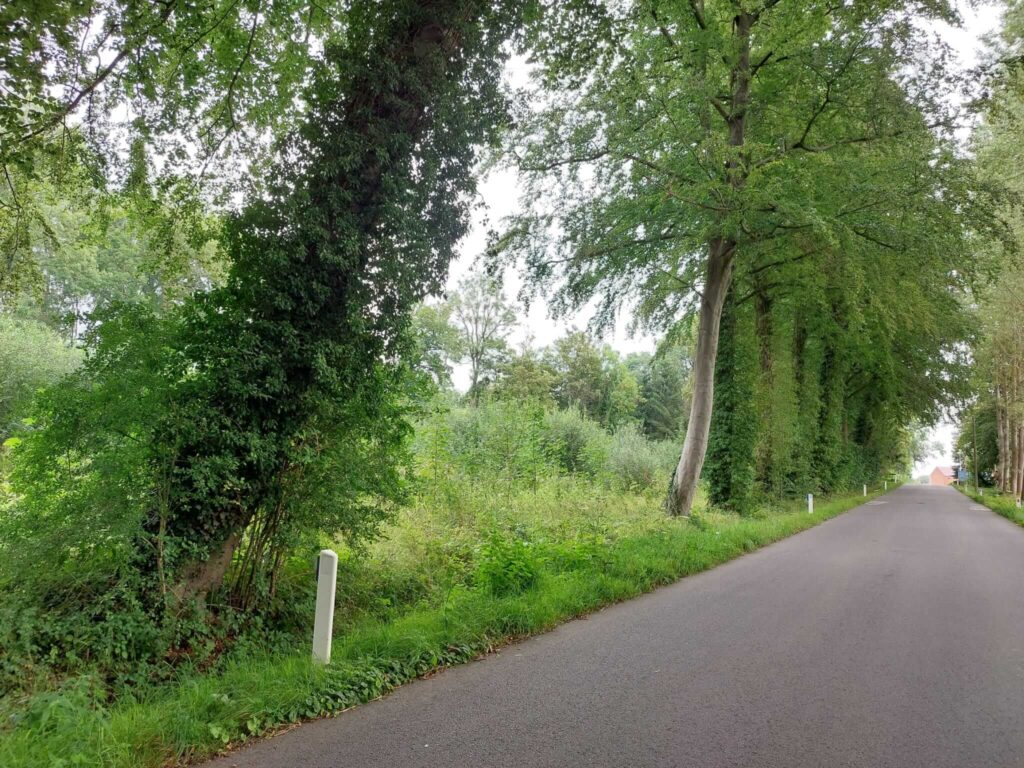
Go Forest example project: Duras, Belgium, in cooperation with many Go Forest members (https://impact.gofamily.be/en/projects/reforestation-in-belgium)
Assisted natural regeneration
Plantation and Assisted Natural Regeneration (ANR) should be complementary components of standard management plans. ANR is a specific form of forest management that enables a forest to be renewed over a long period, giving priority to the gradual natural regeneration of the forest and thus preserving biodiversity and the soil’s carbon storage function throughout the process.
Natural regeneration is a critical factor for the forest’s future, as it entails the development of a new forest through self-sown seeds (gamic regeneration), coppice shoots, or root suckers (agamic regeneration, vegetative propagation). It is, in fact, the sole factor that guarantees the ongoing vitality of the forest in a natural and dynamic process.
The main benefits of assisting natural regeneration are:
Enhanced survival rates: Naturally regenerated saplings, which grow in the same location throughout their entire life without being transplanted, possess an enhanced ability to adapt due to the development of stronger tap roots.
Enhanced resilience: Thanks to the extensive genetic diversity and the enhanced adaptation to the site-specific conditions of naturally regenerated trees, the forest will be better equipped to cope with challenges.
Enhanced ecosystem: The complex ecosystem is formed through a rich genetic diversity and the presence of mycorrhizal fungi, which establish symbiotic relationships with the root systems of naturally regenerated trees. This facilitates enhanced water and soil nutrient absorption and fosters resource-sharing among the trees.
Enhanced sustainable approach: The assisted natural regeneration approach promotes the growth of naturally regenerating vegetation by allowing seed-bearing trees to thrive in or near the regeneration area.
ANR works best in areas that are not highly degraded but are surrounded by forest remnants and where seeds are living in the soil. Furthermore, some forests require the integration of new tree species to enable them to adapt to climate change and better cope with factors such as droughts and diseases. It’s however often possible to combine natural regeneration with the enrichment of the population through the planting of diverse tree species.
The ANR approach requires a good knowledge of the species and site, a good workforce that can work all year round, healthy trees with good genetic characteristics that will be transmitted to the future generation, and some specific operations to ensure the success of the future trees.
Practically, we can use this approach after forest fires, after Ash dieback disease… (and often in combination with our plantation projects). We focus on attaining a result of 1500 trees per hectare of an ANR project site. Depending on the specific features of each region, ARN’s work is spread over periods from 1 to 5 years.
Nature can do so much, and sometimes it is enough to just lend a hand.
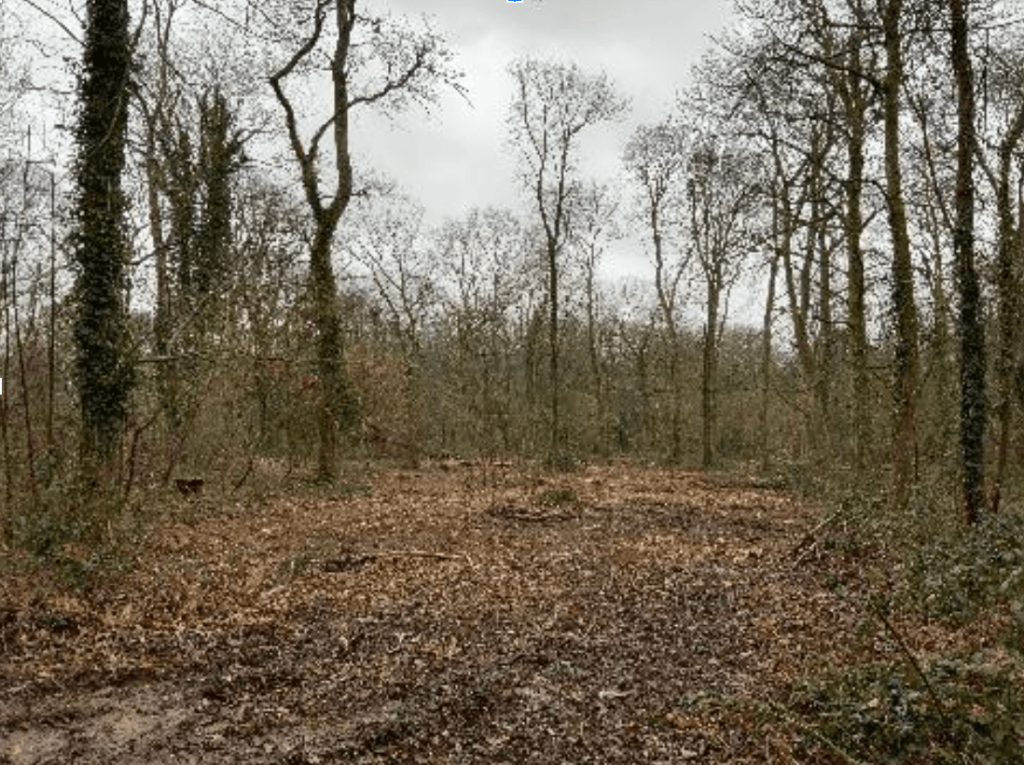



Go Forest example project: Ellemelle, Belgium, looking for support (https://impact.gofamily.be/en/projects/reforestation-in-belgium)
Conservation
We often think about creating additional forests, but it is extremely important to maintain our existing forests in a healthy state with sufficient diversity of tree species for good resilience.
We often think about creating additional forests, but due to the size of our country and the fragmented landscape, Belgium has no large, contiguous areas that can be converted into new forests.
In the current climate context and the decline of biodiversity, it is of great importance to take action in existing forest areas, to guarantee their long-term existence and to maximize their ecosystem services. Conservation refers to the sustainable management and protection of existing forests and natural ecosystems.
Practically, the action plan for each hectare of forest covered by the conservation project includes mainly:
- Documentation of the forest: accurate mapping of plots, description of forestry, botanical and fauna inventories, and measurements of biodiversity and carbon.
- Environmental improvements: general maintenance of the area, the opening of light holes to encourage diverse natural regeneration, works to identify/select/protect natural regeneration, planting of diversification/rejuvenation islands, and planting of hedges / layered forest edges.
- Conservation of certain environments and/or species: designation of aging islands, designation and protection of habitat trees, conservation/restoration of potential wetlands, creation of habitats through planting or maintenance (diversification/densification), and introduction of nest boxes and beehives.
- Relationships with sponsoring companies: regular communication on project progress according to the agreement.






The work is spread over periods from 1 to 5 years.
Go Forest example project: Gravenbos Humbeek, Belgium, looking for support (https://impact.gofamily.be/en/projects/reforestation-in-belgium)
Forest fire prevention and restoration
Sometimes, fire is an important part of forest ecology: as a natural disturbance, it changes resources, substrate availability, and physical environment, creating environmental heterogeneity and growing space. However, in the context of climate urgency, we are concerned about the increasing number of forest fires. Increasing drought, heat waves, and the abandoning of rural areas and forestland created an abundance of dry fuel ready to burn with an ignition: lightning, accident, or human negligence. This has led to more extreme fire behavior which spread uncontrollably, making fire management even more complicated. These massive mega-fires spread for days, even weeks causing the release of large quantities of CO2 emissions, and significant environmental damages, affecting local economies and sometimes even endangering human lives. The higher frequency and above all intensity of forest fires in recent years is a direct consequence of the speed with which climate change is rapidly advancing.
Unfortunately, there is no magic solution for fighting them, but there are some relevant forest management practices to apply, both before and after fires.
The real challenge is to prevent the occurrence of high-severity forest fires acting on the stand structure and avoiding the creation of ladder fuel (as alive or dead vegetation or a combination of both that provides vertical and horizontal continuity allowing surface fire to progress into the shrub or tree canopy layer) which would allow a surface fire to evolve to a crown fire or a more intense one.
Our proactive prevention measures aim to reduce the fuel to keep the forest fire under control at the ground level and therefore avoid intense burning and large-scale wildfires.
- Reduce the forest density by thinning.
- Convert dense flammable forests to forests with resistant and adaptive species to wildfires.
- Create firebreaks.
- Use prescribed forest fire as low-burning fires help the forest to become more resistant to high-severity burns later on.
- Avoid working in the dry season with mechanical machines in the forest.
- Improve forecasting.
- Use alarm sensors in the forest
The European countries most affected by forest fires are up to now southern France, Greece, Italy, Portugal, and Spain, but an expansion of fire-prone areas and longer fire seasons are projected in most European regions, also in Belgium. We, therefore, implement preventive measures in all the management processes especially where fire risk is high.
On the reactive side, we also restore and reforest burnt forests making them more resistant and resilient. These post-fire actions are largely linked to the size and intensity of the fire which influences the availability of propagules (plant material needed for plant reproduction).

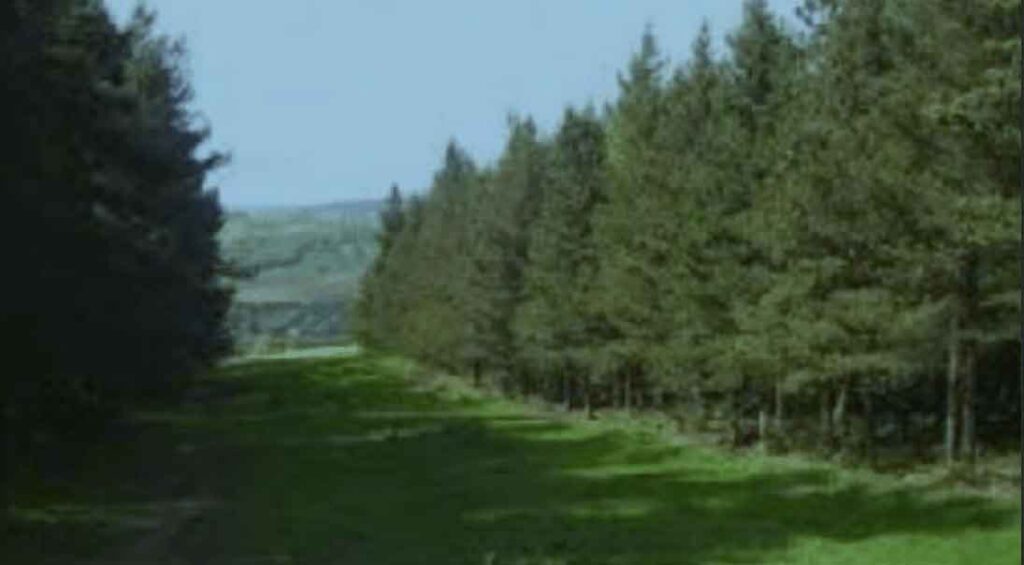
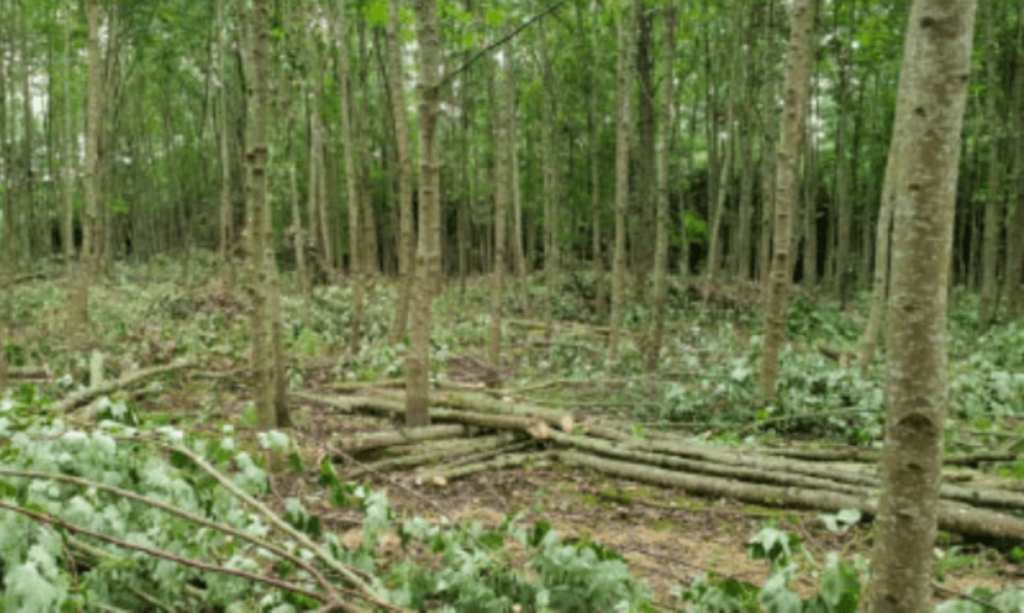


And lastly, the beautiful river woodlands
River woodlands include trees and woods in, next to, and near rivers, burns, and lochs. They are woodlands that are influenced by river processes such as recycling nutrients, storing carbon, and regulating water flow. In turn, these woodlands influence the river and its freshwater habitat.
River woodlands are the green arteries of an ecosystem. They are vital for creating and maintaining healthy rivers and are biologically rich areas that provide a link between land and water. Rivers transport nutrients from nearby woods, forming the basis of food chains, while many species rely on river woodlands for habitat, food, and vital stages of their life cycles such as spawning. There is no set width or design for a river woodland, with the ecosystem extending across valleys as far as the influence of groundwater, flood waters, and higher levels of humidity in the air. Though they are different in every place, they are always integral to healthy rivers, land, and people.
Across Scotland, native woodlands have come under a range of threats such as commercial afforestation, over-grazing, pollution, and the introduction of invasive exotic species. River woodlands are no exception to this trend and often face unique pressures due to their relationship with the watercourse.
That’s why we take action here to create, restore, and improve the quality of river woodlands. Common actions include planting appropriate native species, fencing the area to protect it from grazers, and inserting large wood material into the water.




Go Forest example project: East Rhiddorich, Scotland, looking for support (https://impact.gofamily.be/en/projects/reforestation-in-the-united-kingdom)
📧 If you have more questions about our projects or want to invest in one of these systems, contact us via info@goforest.be or book a meeting here: https://calendly.com/goforest


